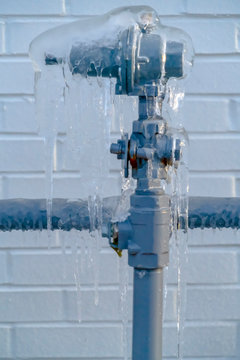Everyone has got their own unique thinking with regards to How To Avoid Freezing Pipes.

Winter can damage your plumbing, specifically by freezing pipelines. Below's exactly how to prevent it from occurring and what to do if it does.
Introduction
As temperatures decline, the threat of frozen pipelines increases, possibly bring about expensive fixings and water damage. Recognizing how to avoid icy pipes is critical for house owners in cold climates.
Comprehending Icy Pipelines
What causes pipes to ice up?
Pipelines ice up when exposed to temperature levels below 32 ° F (0 ° C) for extended periods. As water inside the pipelines ices up, it increases, putting pressure on the pipeline walls and potentially causing them to rupture.
Dangers and damages
Frozen pipes can lead to water supply disruptions, residential or commercial property damage, and costly repair services. Burst pipes can flooding homes and cause extensive architectural damage.
Indicators of Frozen Water Lines
Identifying frozen pipelines early can prevent them from breaking.
Just how to recognize icy pipelines
Search for reduced water flow from taps, uncommon odors or noises from pipes, and visible frost on revealed pipes.
Avoidance Tips
Protecting susceptible pipelines
Cover pipes in insulation sleeves or utilize warm tape to secure them from freezing temperatures. Concentrate on pipelines in unheated or external areas of the home.
Home heating techniques
Maintain interior areas properly heated, specifically areas with plumbing. Open up closet doors to allow cozy air to distribute around pipes under sinks.
Shielding Exterior Pipes
Yard hoses and outdoor faucets
Separate and drain pipes yard hoses before winter. Set up frost-proof spigots or cover outside faucets with protected caps.
What to Do If Your Pipes Freeze
Immediate actions to take
If you suspect icy pipelines, maintain faucets available to relieve pressure as the ice melts. Use a hairdryer or towels soaked in hot water to thaw pipes slowly.
Long-Term Solutions
Structural adjustments
Consider rerouting pipes far from outside wall surfaces or unheated areas. Add added insulation to attic rooms, basements, and crawl spaces.
Upgrading insulation
Buy high-quality insulation for pipelines, attics, and walls. Correct insulation assists maintain regular temperatures and reduces the threat of frozen pipelines.
Conclusion
Preventing icy pipelines needs aggressive measures and quick reactions. By understanding the reasons, indicators, and preventive measures, house owners can secure their plumbing during cold weather.
5 Ways to Prevent Frozen Pipes
Drain Outdoor Faucets and Disconnect Hoses
First, close the shut-off valve that controls the flow of water in the pipe to your outdoor faucet. Then, head outside to disconnect and drain your hose and open the outdoor faucet to allow the water to completely drain out of the line. Turn off the faucet when done. Finally, head back to the shut-off valve and drain the remaining water inside the pipe into a bucket or container. Additionally, if you have a home irrigation system, you should consider hiring an expert to clear the system of water each year.
Insulate Pipes
One of the best and most cost-effective methods for preventing frozen water pipes is to wrap your pipes with insulation. This is especially important for areas in your home that aren’t exposed to heat, such as an attic. We suggest using foam sleeves, which can typically be found at your local hardware store.
Keep Heat Running at 65
Your pipes are located inside your walls, and the temperature there is much colder than the rest of the house. To prevent your pipes from freezing, The Insurance Information Institute suggests that you keep your home heated to at least 65 degrees, even when traveling. You may want to invest in smart devices that can keep an eye on the temperature in your home while you’re away.
Leave Water Dripping
Moving water — even a small trickle — can prevent ice from forming inside your pipes. When freezing temps are imminent, start a drip of water from all faucets that serve exposed pipes. Leaving a few faucets running will also help relieve pressure inside the pipes and help prevent a rupture if the water inside freezes.
Open Cupboard Doors
Warm your kitchen and bathroom pipes by opening cupboards and vanities. You should also leave your interior doors ajar to help warm air circulate evenly throughout your home.

I hope you enjoyed reading our section about Winter Plumbing Precautions: Preventing Frozen Pipes. Thanks a lot for finding the time to browse our blog post. In case you appreciated our post please make sure you remember to share it. Many thanks for taking the time to read it.
Go Deal Now